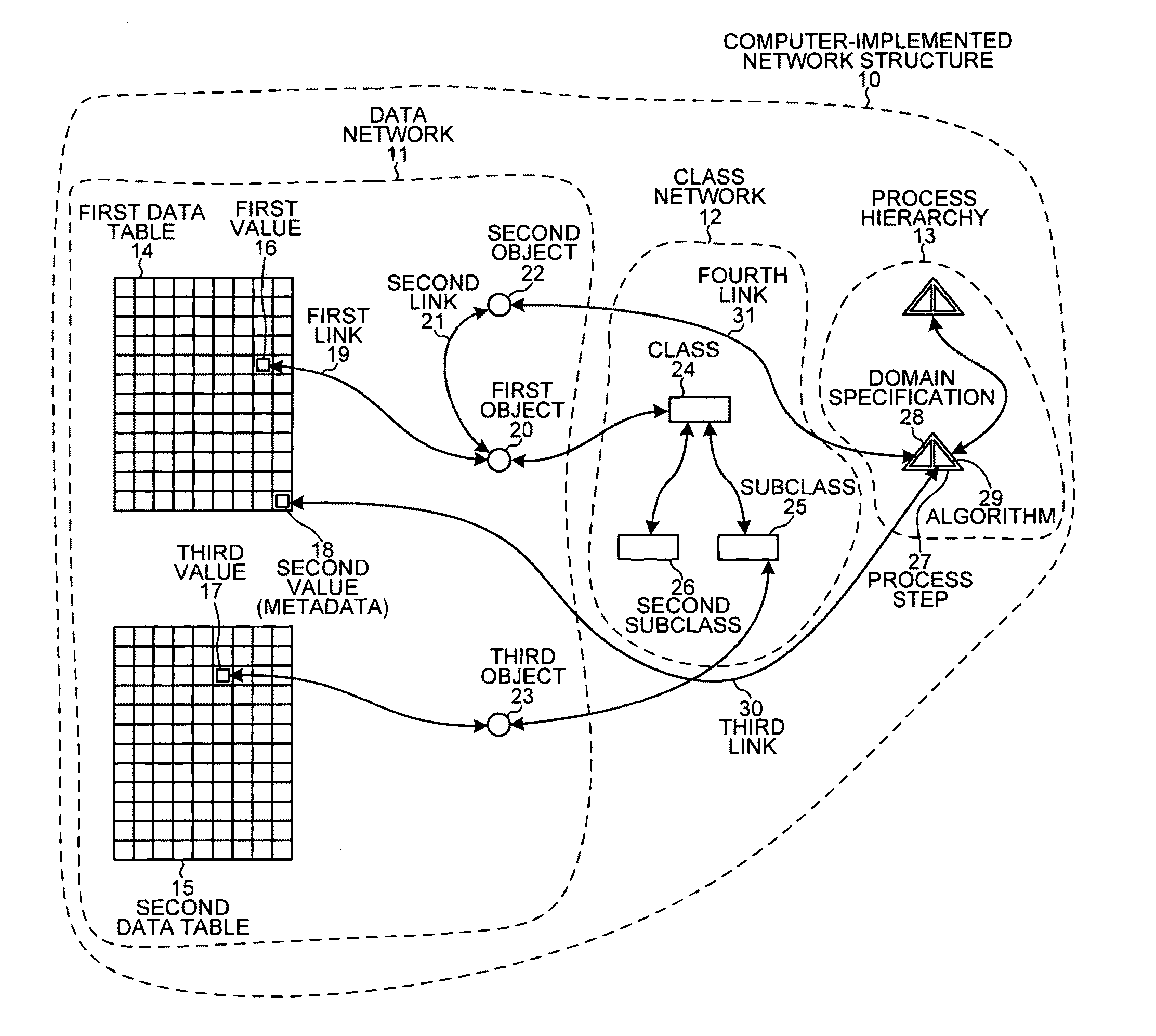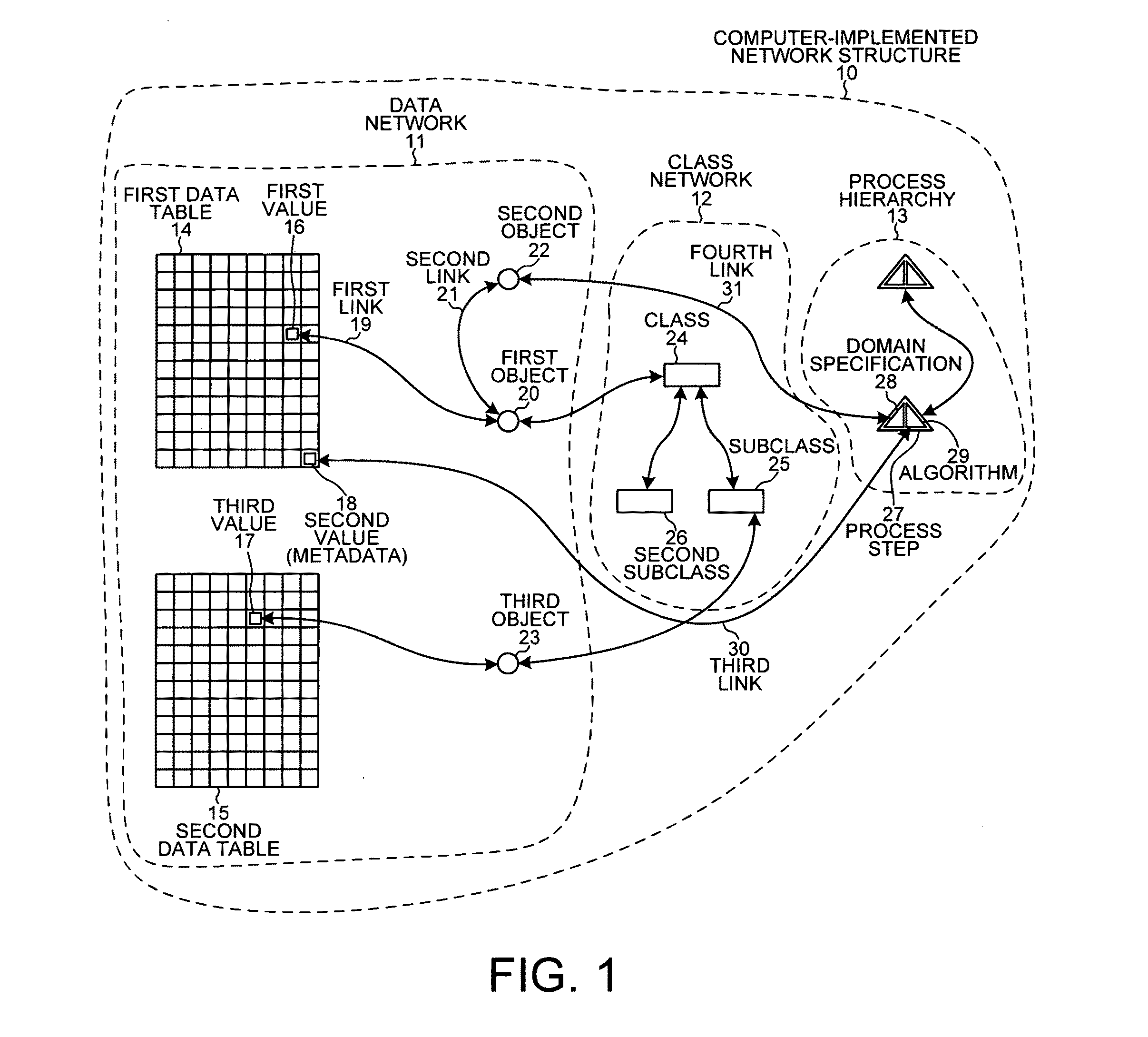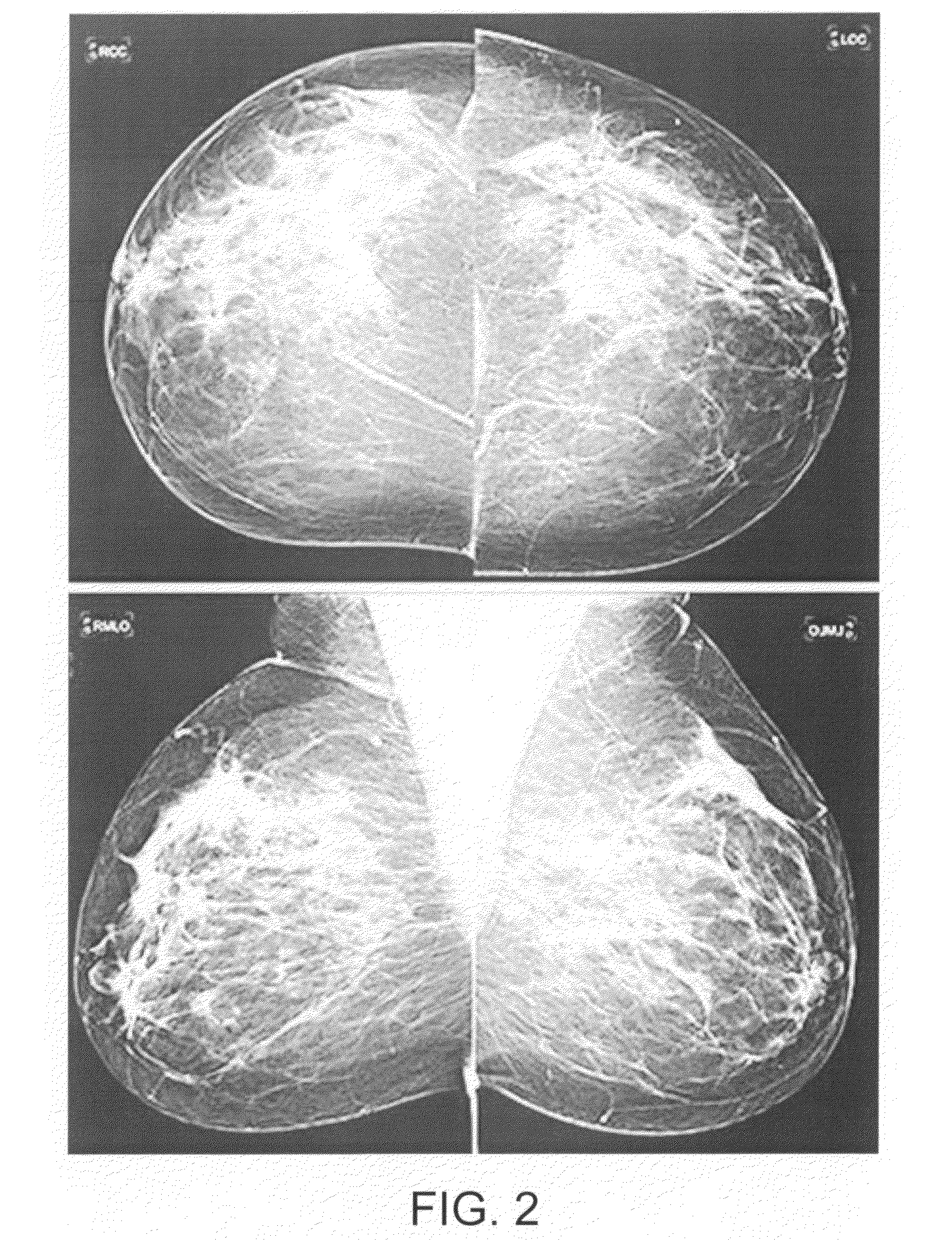Context driven image mining to generate image-based biomarkers
- Summary
- Abstract
- Description
- Claims
- Application Information
AI Technical Summary
Problems solved by technology
Method used
Image
Examples
Embodiment Construction
[0060]Reference will now be made in detail to some embodiments of the invention, examples of which are illustrated in the accompanying drawings.
[0061]FIG. 1 is a simplified diagram of a computer-implemented network structure 10 used to locate information of interest from among table data values. The network structure 10 includes a data network 11, a class network 12 and a process hierarchy 13. In the example of FIG. 1, data network 11 includes a first data table 14 and a second data table 15. The table data values in data tables 14-15 are in the form of both numbers and text.
[0062]In one embodiment, some of the table data values describe a medical patient, while other table data values are digital pixel values from a medical image of the patient. The patient is suspected of having breast cancer, and the medical image is a mammogram. Thus, some of the table data values are floating-point values representing the spectral intensity of individual pixels of the digitized mammogram. The o...
PUM
 Login to View More
Login to View More Abstract
Description
Claims
Application Information
 Login to View More
Login to View More - R&D
- Intellectual Property
- Life Sciences
- Materials
- Tech Scout
- Unparalleled Data Quality
- Higher Quality Content
- 60% Fewer Hallucinations
Browse by: Latest US Patents, China's latest patents, Technical Efficacy Thesaurus, Application Domain, Technology Topic, Popular Technical Reports.
© 2025 PatSnap. All rights reserved.Legal|Privacy policy|Modern Slavery Act Transparency Statement|Sitemap|About US| Contact US: help@patsnap.com



